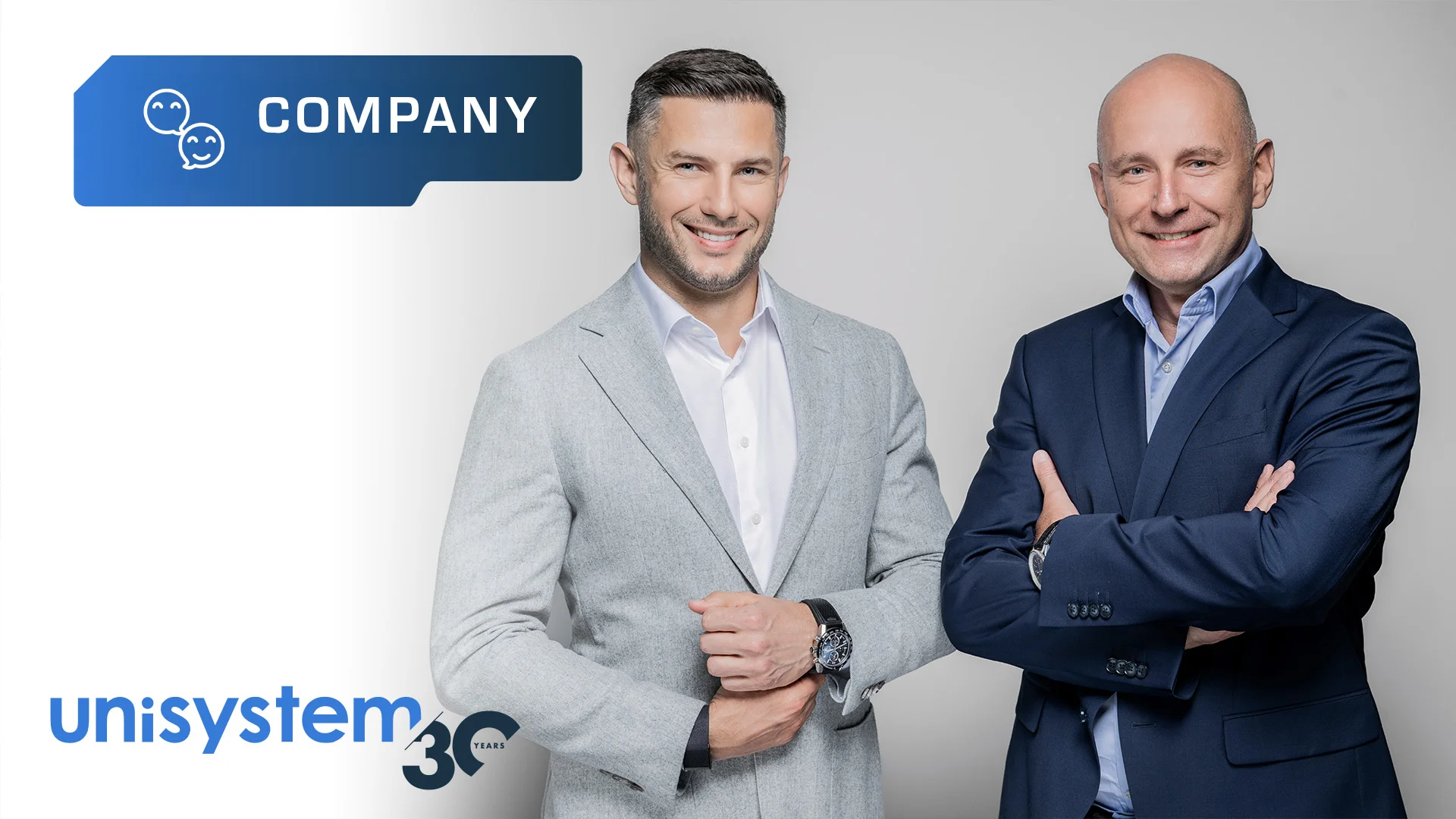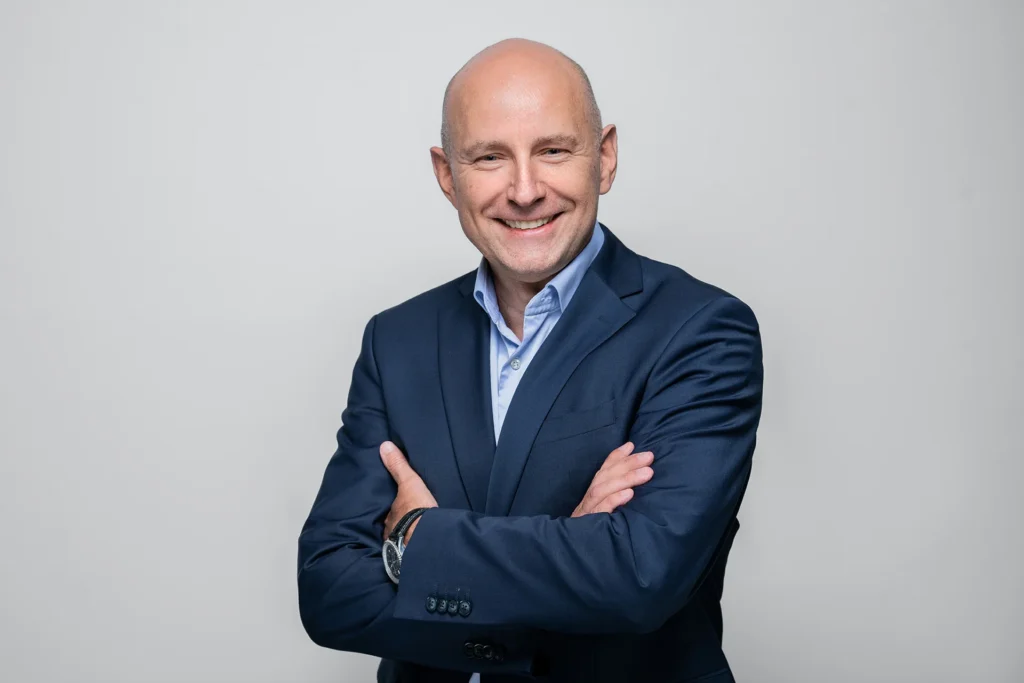
This year, Unisystem celebrates its 30th anniversary – three decades of dynamic growth in display technologies, from a one-person home-based business to a modern provider of advanced technological solutions with laboratories, assembly halls, and an international client portfolio. Sławomir Szweda, CEO, and Kamil Kozłowski, COO and VP, discuss the company’s journey, the importance of specialization, and directions for future development.
Table of Contents
Unisystem was founded in 1995. What were your operations like then, and how do they look today?
Sławomir Szweda: We started very modestly – literally from home. At first, I worked alone, communicating with partners from Asia via fax, which often woke me up in the middle of the night. The biggest challenge back then was obtaining the right components – knowing where to look and how to import them.
Today, the situation is the opposite – components are abundant, but the key is proper selection, integration, and ensuring reliability. Unisystem is now a group of companies with modern technical infrastructure: assembly halls, research laboratories, a cleanroom, and ample warehouse space. A team of several dozen specialists carries out projects for clients in many countries, and we do this with the same commitment we had from the beginning.
What sets Unisystem apart from the competition?
Kamil Kozłowski: Our strength lies in specialization – we focus on display technologies. It’s a narrow field but very dynamic and demanding. Over the years, we’ve built exceptional expertise in it. We’re not a typical distributor – we act as a technology partner who thoroughly understands the customer’s device.
Our Solution department plays a huge role – it’s where complete display module projects are created. We select the display, design the electronics, cables, power supply, enclosures, and protective layers, and, if needed, develop software. This working model allows us to deliver thoroughly considered solutions – ready for deployment and rapid integration.

How do you cooperate with clients?
Sławomir Szweda: It all starts with a conversation and a careful analysis of needs. The key is understanding the environment in which the device will operate, its function, expectations for durability, user interaction, and even design constraints. The better we understand the context, the more precisely we can choose technology that ensures reliable operation for many years.
Our goal isn’t to sell the most expensive component but the best possible solution – one that truly meets the customer’s requirements, satisfies the end user, and ensures optimal value for money. This approach directly influences the final product’s quality, stability, and customer satisfaction. It also builds trust in our brand in the long run.
Which display technologies are most popular today? Do you expect changes in the coming years?
Sławomir Szweda: LCD-TFTs are still the undisputed leader. They’re a proven, flexible technology that continues to evolve. Today, they offer excellent optical performance – high brightness, contrast, and color depth – and are available in a wide range of sizes and formats. It’s worth mentioning local dimming, a local backlight control, which significantly improves contrast by dimming the background while brightening active image areas. This brings visual quality closer to OLED while maintaining the benefits of LCD-TFT.
We’re also seeing growing interest in e-paper technology, especially in applications in which low power consumption is essential, such as battery-powered devices. E-paper won’t replace LCD-TFT in dynamic applications, but it’s excellent for simple, static information displays.
More and more devices today are using touch panels. How are these adapted to different working environments?
Kamil Kozłowski: That’s true. Touch panels are becoming a common standard in devices around us. Their use in different environments requires very precise adaptation to working conditions. Choosing the right solution isn’t just about picking a capacitive, resistive, or infrared technology but also adjusting the panel’s response to specific usage scenarios.
We fine-tune sensitivity, resistance to interference, and response behavior in the presence of contaminants, including liquids. It is essential in outdoor or public-use applications, where you can’t assume users will have ideal device operation conditions.
An example? It’s hard to imagine production line workers taking off gloves to operate a machine – it would be impractical and potentially dangerous. That’s why devices must be configured for all conditions, including glove use.


Which industries use solutions from Unisystem’s portfolio?
Sławomir Szweda: Our solutions are used widely – from consumer through commercial to industrial applications. In the POS sector, we support the development of modern user interfaces in vending machines or self-service kiosks. In these cases, the screen is not just used to present content – it often becomes an active interaction hub integrated with payment systems, scanners, or touch technology.
Our components are used in validators, ticket vending machines, and passenger information boards in public transportation. These applications require high resistance to external factors – temperature changes, humidity, heavy use – so we pay close attention to durability and reliability.
We also have a strong presence in the medical sector. Our displays are part of diagnostic and measuring devices that operate in strict conditions, in which precision, stable performance, and resistance to disinfectants are crucial.
Industrial projects are increasingly part of our portfolio – screens used in automation systems integrated with control units. In such environments, resistance to vibrations or electromagnetic interference matters, as do user ergonomics and interface intuitiveness.
It’s also worth mentioning special projects, including for the military sector, in which durability, safety, and functionality in extreme conditions are key.
These experiences show that we can meet diverse customer needs and application environments.
What is the future of Unisystem?
Sławomir Szweda: First and foremost, we want to continue expanding internationally. We already have significant export experience and operate in many European markets. However, we still see great potential – especially in specialized industrial applications.
We also want to strengthen our Solution department, increase its design capacity, and develop our own ready-to-deploy modules that can be easily adapted to various applications. Such solutions shorten implementation time and lower customers’ entry barriers.
Kamil Kozłowski: At the same time, we’re heavily investing in new technologies – especially in AI and edge computing. We’re working on solutions based on platforms like Nvidia Jetson, which allow real-time image analysis and decision-making without sending data to the cloud. It is no longer a futuristic vision – it’s a real market need. That’s why we want not only to respond to it but also to stay ahead of it. Our goal is to provide technologies that support our customers’ growth and give them a competitive edge – now and in the future.




